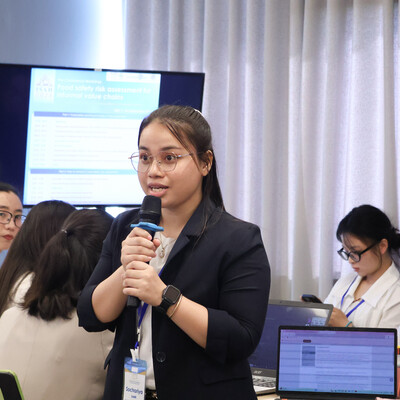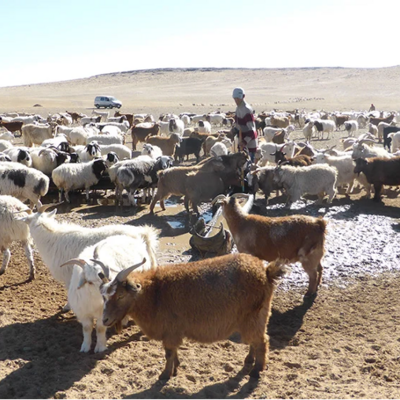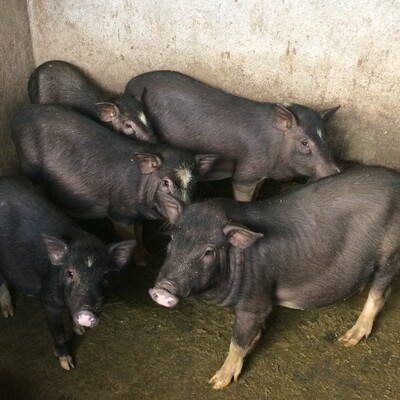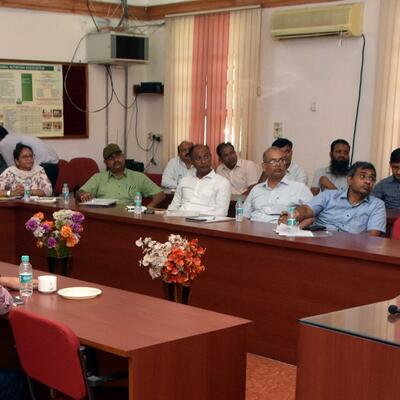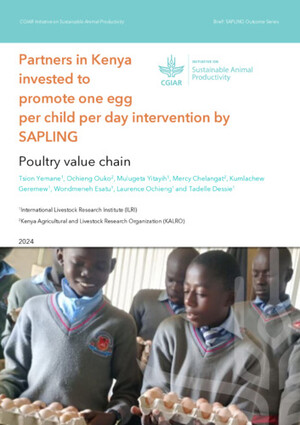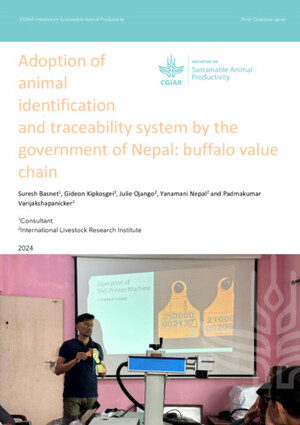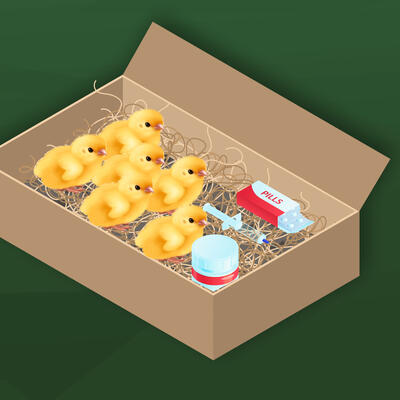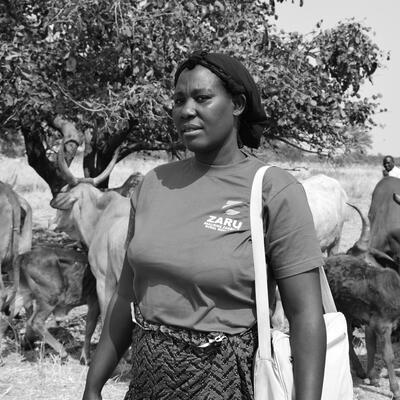
Creative (graphic) facilitation to support a dairy value chain seminar
What does it take to engage (large) private sector operators, smallholder farmers, knowledge centre specialists and researchers, civil servants and representatives from non-governmental organizations (NGOs) meaningfully in conversations around dairy value chains in Africa? Quite simply: good content and questions, a good mix of participants, and useful (graphic) facilitation – with all that this encompasses …
From 21 to 24 September, such dairy ‘value chain actors’ came together to attend the African Dairy Value Chain Seminar.
The seminar was organized by the Technical Centre for Agricultural and Rural Cooperation (CTA) and the International Livestock Research Institute (ILRI) – with support from the CGIAR Research Program on Policies, Institutions and Markets and the CGIAR Research Program on Livestock and Fish. It brought together over 80 participants from 18 different countries and was organized back-to-back with the annual event of the East and Southern African Dairy Association (ESADA).
A different event?
The intention of the organizers, from the start, was to organize a ‘different kind of event’, realizing that a lot of workshops are run in a rather standard kind of way (read some recent observations about reinventing the workshop by Amanda Harding and Terry Clayton) without achieving the engagement and results expected.
The elements of this ‘different event’ included:
- A very carefully selected group of participants, spanning various groups of users, particularly private sector operators who are often missing or under-represented. This attention also extended to bring representatives from Southern and West Africa, anglophones and francophones, to have a genuine ‘African’ feeling, despite the (numerically) dominating group of Kenyans.
- A field visit organized on the first day (incidentally a Sunday) to develop stronger bonds across participants and to illustrate challenges and opportunities and find interesting ways to farmers into the seminar;
- A couple of graphic facilitators that ‘live scribed’ (visually captured) all the plenary sessions, and kept a ‘knowledge wall’ up throughout the event, to update it with insights from the various group conversations;
- A Powerpoint-free zone, not because Powerpoint is not a good tool, but because it is the standard mode of presentation and makes everyone complacent about developing ‘fresh’ types of presentations. However, one Prezi included all keynote speeches and another one summarized the take-home messages from the seminar for the ESADA conference.
- An ‘interactive’ and flexible agenda where participants were given ample time to share their own experiences, digest presentations, help each other (using the peer assist method), share posters about tools and methods, and dive deeper into key questions around the three red threads of the seminar (inclusion of smallholder farmers, investment by private operators and gender).
- A participatory approach giving responsibilities to nearly all the participants at some point (to champion topics, take notes, report, help organize etc.); also giving time to individual reflection, as opposed to group reflections.
- The event was conducted in French and English, with all organizers able to speak both languages, and with simultaneous translation for plenary sessions and personal assistance for break-out work.
- A dedicated photo-video team was hired to take pictures during the field trip and the seminar sessions, to interview participants and produce two short films with perspectives from the event organizers and from the participants.
Results and reflections
Even though the evaluation of the seminar (Excel Spreadsheet) was overwhelmingly positive, it does not mean to say that some useful lessons cannot be drawn to help tease out potential areas of improvement.
First of all, what was not done, but which could have enhanced the event, was to prepare a much stronger social media presence. However a Twitter handle was created for the event: #AfricanDairy. And thanks to a few very active tweeters, a lot of messages were shared, not least in French.
The dual languages used throughout the event – with naturally more space given to English – did not impact the good conduct of the seminar and participants were very happy with this. The small number of ‘purely’ Francophone participants did help, as they could always be supported by simultaneous translators, but that would not have been the case if their number had exceeded 10 people.
This had major implications on the logistical set up: At all times, microphones and headsets were on the tables, with cables covering the table and making use of these tables for interactive exercises like a world café more delicate (flipchart stands were used instead of the tables). However, the interpreters did their best to ensure that in other exercises not using tables (e.g. Open Space Technology) the Francophone participants could follow instructions and join conversations. One situation where the microphone set up actually hampered the good progress of the sessions was during the last session on Monday – a Samoan Circle conversation – where all participants stayed at their seats because it was not possible to move all the participants’ chairs around a central circle. That session simply did not work because of the set up. Good lesson for the future.
Another implication of the dual languages was the necessary use of microphones, which detaches speakers from the audience, but again this didn’t seem to affect the crowd and the conversations too much. The room, at the Intercontinental Hotel, was large enough that the translation booths did not use all the space left.
One of the major issues for improvement was the use of music, which one of the graphic facilitators pointed out was missing. Particularly to drive people in and around the room, to keep them energized during the sessions etc. music can be a great ingredient of success, and one that we will try in future events.
The other element that could have been improved was the composition of participants. Quite a few people mentioned that they missed additional participation by governmental agency representatives and also by private sector actors. This event was better than others in this respect, but still not good enough.
The final issue is that this seminar actually required a lot of work from everyone and particularly from the main organizer Jo Cadilhon. One wonders whether such an effort each year can be sustained on top of everything else.
Read a blog post about this event: http://news.ilri.org/2014/09/25/cta-ilri-african-dairy-value-chain-seminar-closes-with-colourful-results/
Read the Twitter Storify overview of all tweets about this event: https://storify.com/ewenlb/african-dairy-value-chain-seminar
Discover pictures related to this event:
- Admire the graphic facilitation recordings of the sessions as well as the knowledge wall
- See all other pictures from the event (for now only the group work results – soon all graphic facilitation products and general pictures)
See the evaluation of the dairy seminar.






